Not "Kepler" one
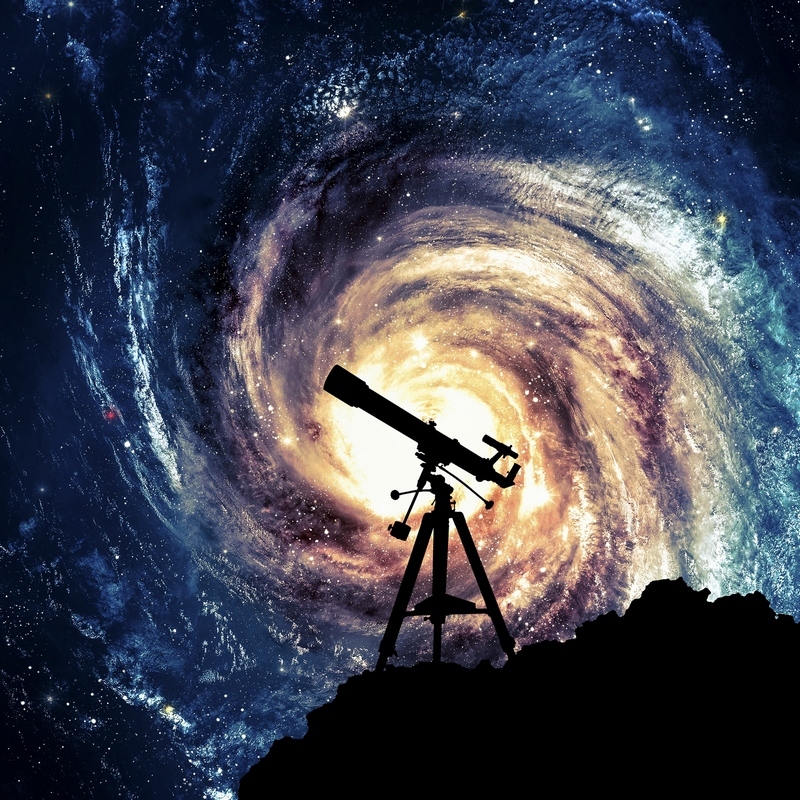
Today we know 3,371 confirmed exoplanets . Of these, 2,327 (69%) are from the Kepler space telescope , which is still the main tool for searching for exoplanets. It was created specifically for this task. But although Kepler is well able to find exoplanets, its capabilities are not always sufficient for their more detailed study. And this may be useful for very different telescopes.
As you know, there are several methods for detecting exoplanets . The most commonly used are transit and radial velocity methods. It has been 20 years since the discovery of the first exoplanet ( 51 Pegasus b ), which revolves around a star that is close in characteristics to the Sun. The current year was especially fruitful for the exoplanets discovered, although it is still far from complete. Data as of May:

The speed of detection increases with the improvement of methods of observation and analysis, as well as due to an increase in the duration of observations of the same objects. That is, with the accumulation of statistics, there is confirmation of the presence of exoplanets in one or another star. In particular, 4,696 luminaries are awaiting our decision.
The second life of "Kepler"
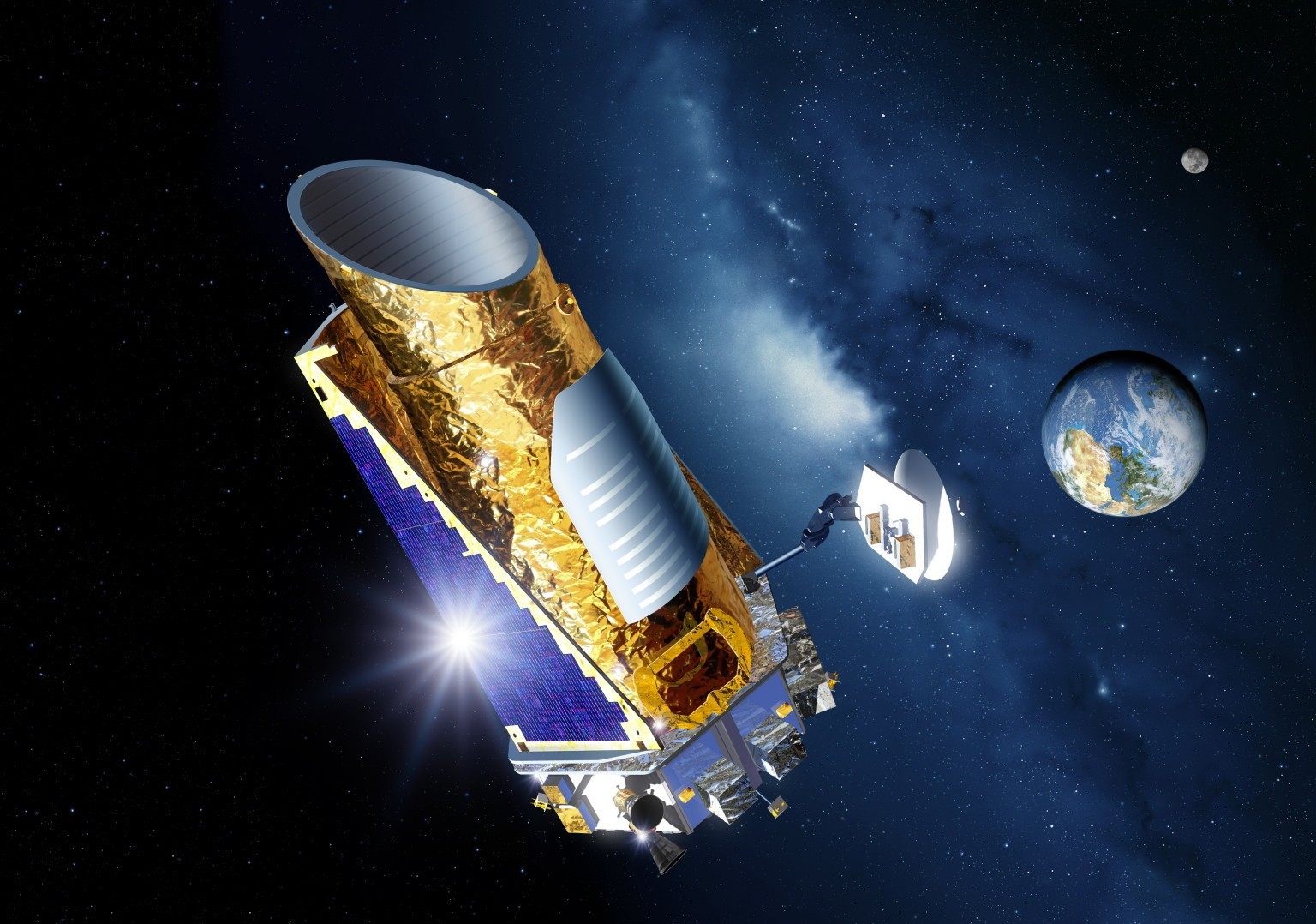
However, any technology has a certain resource, and when Kepler failed the second of the four gyroscopic flywheels in May 2013, the first phase of the observation program came to an end , because with the two remaining flywheels the telescope could not hold the scope for a long time then a particular point in space.
Engineers were able to reorient Kepler so that it performs observations in the plane of the solar system. And now he performs a K2 mission, also known as Second Light .
As part of this mission, Kepler is exploring new planets revolving around their stars with a short orbital period. And although it is unlikely that among them inhabited will be found, yet the data obtained are of great importance for understanding the formation of planets. At the same time, the K2 mission allows the discovery of new objects that were previously outside the telescope’s field of view, from star systems to supernovae in distant galaxies.
But since Kepler now has limited functionality, what other tools can detect and study exoplanets? With whose help can we continue the search for extraterrestrial life? Here are just some interesting telescopes.
Minerva
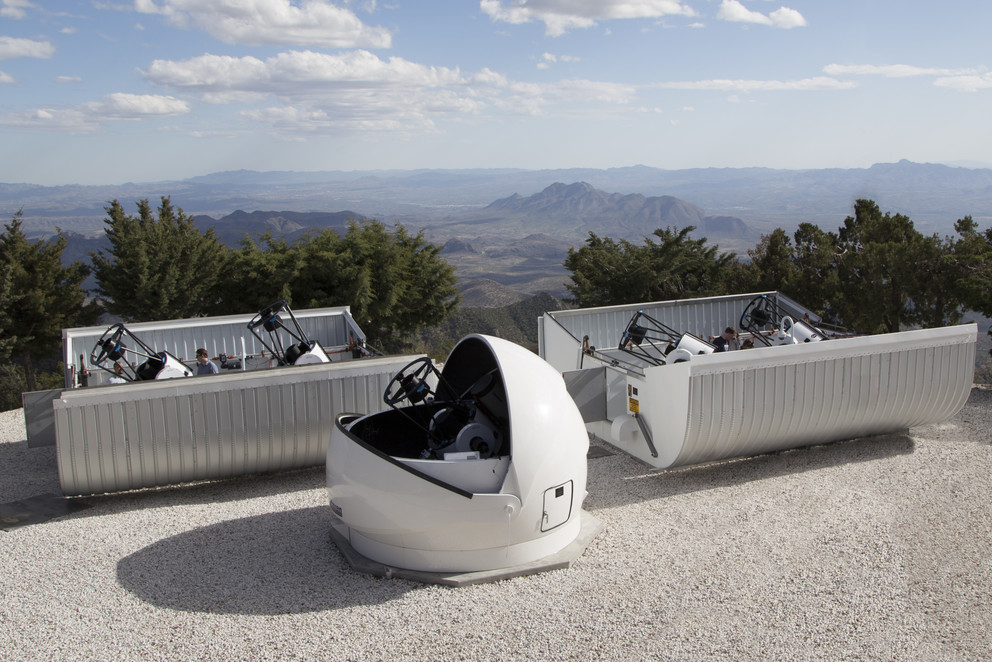

The Minerva Mini-Observatory (MINERVA, MINiature Exoplanet Radial Velocity Array ) is located on Hopkins Mountain, USA, and has been operating since May 2015. It was created to search for planets like the Earth, as well as the “ super-earth ” in the inhabited zones of other stellar systems. The observatory is an array of four robotic telescopes capable of:
- accurately measure the spectrum of bright enough stars for further analysis using radial velocity,
- and also to perform photometry, that is, to measure the difference in the brightness of the glow for subsequent analysis by the transit method.
Despite the modest size and location on the surface of the planet, the advantage of Minerva is its specialization. Every clear night her telescopes perform the same task — they look for signs of the presence of exoplanets in other stellar systems. Of course, the successes of Minerva are much more modest compared to Kepler, with its help only a few dozen planets were discovered. But on the other hand, they are located close enough and can be investigated in much more detail, which is a huge advantage for scientists seeking inhabited worlds.
Gaia
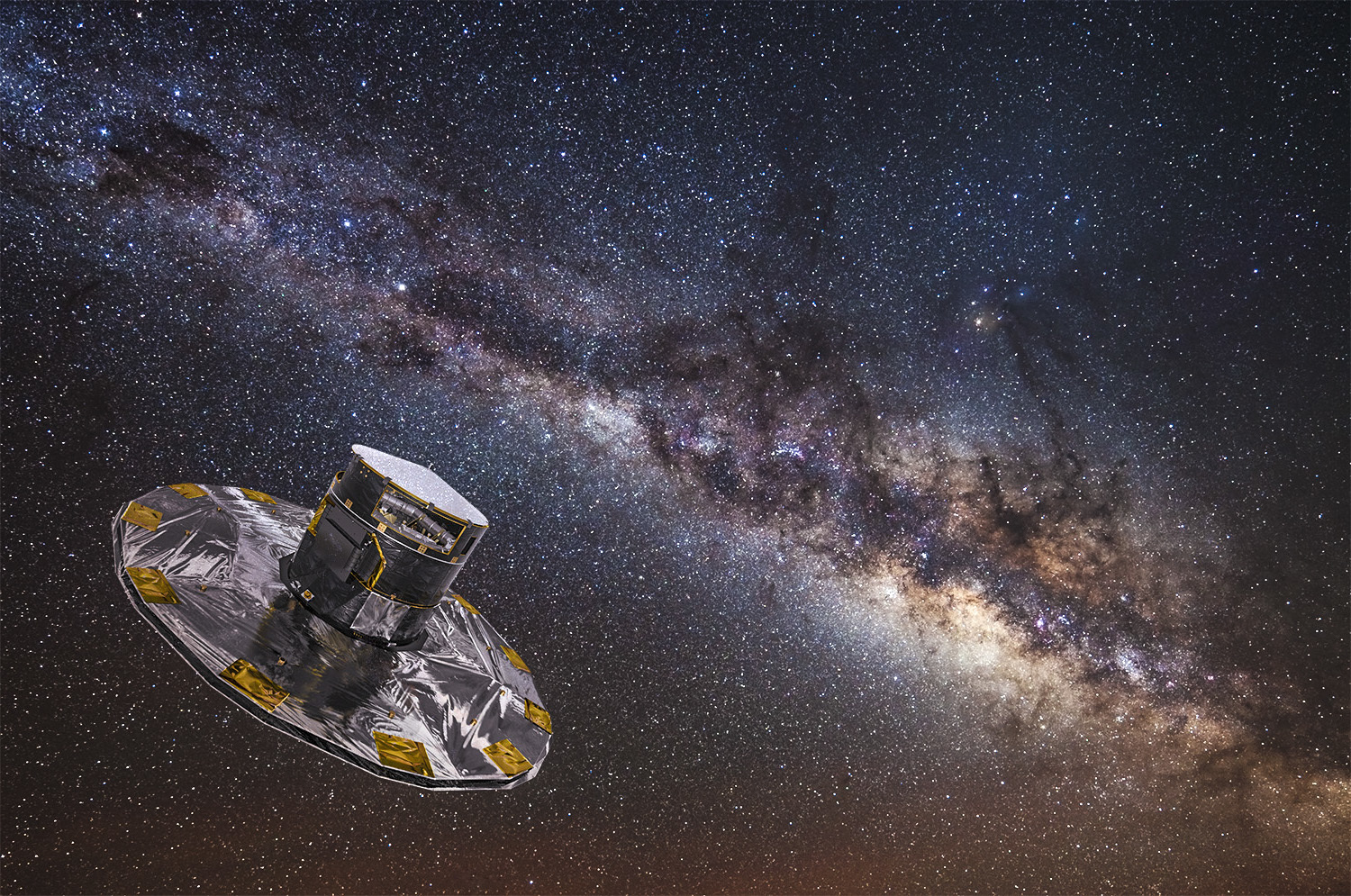
This is a space telescope , launched in December 2013 by the European Space Agency. Before him is a large-scale task: for the first five years of operation, accurately measure the coordinates, distances and trajectories of motion of about one billion stars.
In addition, "Gaia" will be used to create a three-dimensional map of almost 1% of all the stars of the Milky Way. It is believed that the sensitivity of the instruments of the observatory is so high that it will allow to detect tens of thousands of new exoplanets using the radial velocity method. Although I must say that most of them will be located so far that we are unlikely in the foreseeable future will be able to get more or less detailed information about these planets. On the other hand, nothing prevents with the help of "Gaia" to try to find habitable planets near the solar system.
TESS (Transiting Exoplanet Survey Satellite)
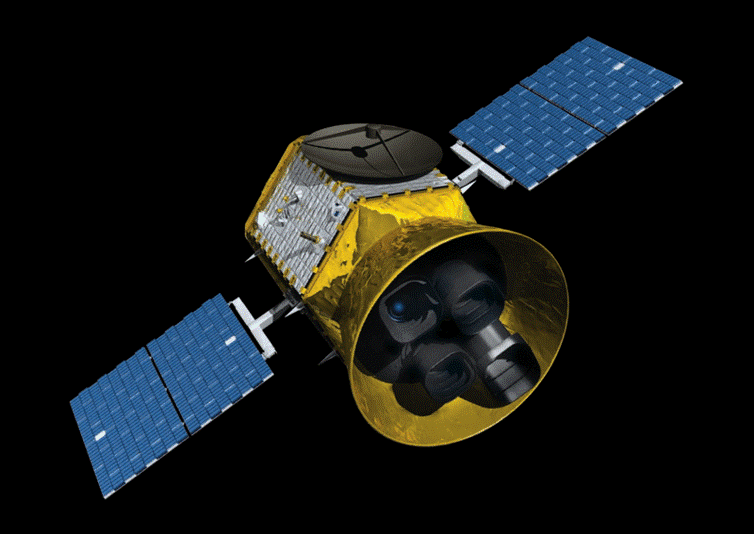
Another space telescope, the heir to Kepler . Its launch is scheduled for 2017, and in the first two years of operation, the satellite will search for an exoplanet transit method. However, unlike Kepler, TESS will “specialize” in the brightest, relatively close-located stars, successively exploring the entire sky with the help of four cameras.
First of all, the telescope will search for planets like the Earth located in habitable zones. In the future, they will be explored in more detail with the help of powerful tools, such as the telescope of James Webb or the Giant Magellan Telescope, which are being created.
It is planned to investigate with the help of TESS about 500,000 stars, around which thousands of planets are estimated to be discovered. Since the telescope will work only with bright stars, this will facilitate their further study by ground-based observatories.
JWST (Telescope of James Webb)
This space telescope is often referred to as the Hubble and Spitzer heir . During the development of JWST, numerous difficulties arose , due to which the launch shifted from 2011 to 2018.
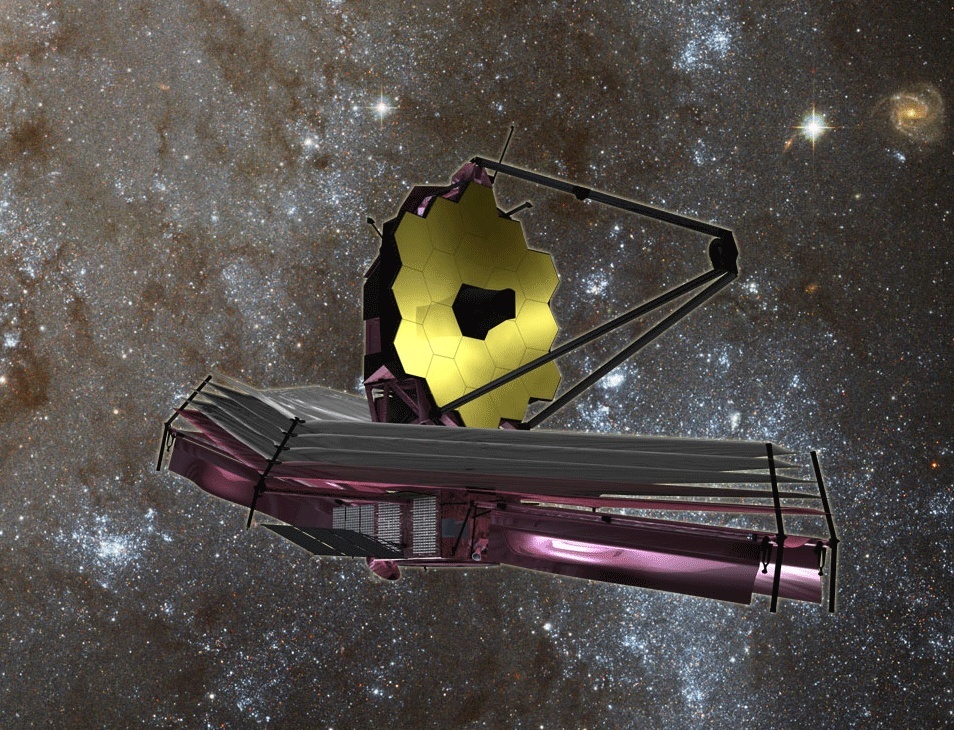
JWST will have a mirror with a diameter of 2.7 times larger than that of the Hubble. It will be forced to cool to a very low temperature for the sake of increasing sensitivity in the infrared spectrum.
Giant Magellan Telescope (Giant Magellan Telescope, GMT)
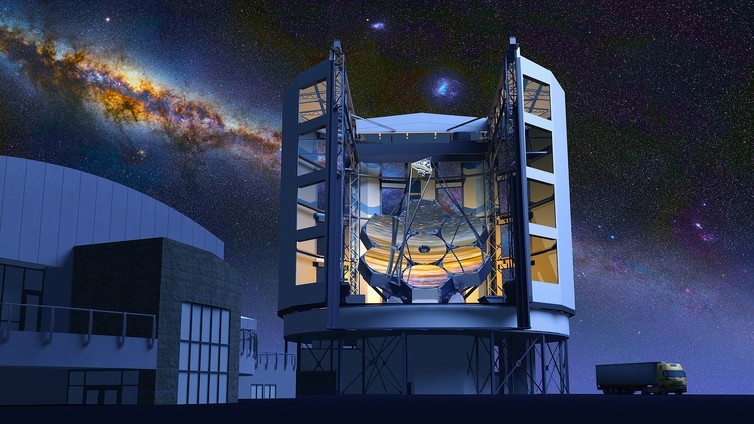
GMT is scheduled to be commissioned in 2020, it will be located in Chile and will be included in the Las Campanas Observatory complex . The total diameter of its composite mirror will be 25 meters, and it will far surpass all existing optical telescopes in sensitivity to light. In particular, it will be 10 times more light-sensitive than the Hubble, which, unlike GMT, does not interfere with the earth's atmosphere. Thanks to this, the telescope will make it possible to achieve revolutionary results, no matter how pathetic it may seem, in the search and study of exoplanets.
If planets similar in parameters to Earth are detected, the spectral composition of their atmosphere can be analyzed with the help of the spectrograph included in the GMT, looking for traces of oxygen and methane, which may be a sign of life.
Thirty Meter Telescope (TMT) 30 Meter Telescope


Even more impressive than GMT, the design. So far, the telescope is at the design stage, but if it is still built, then the diameter of the multi-component mirror will be 30 meters. It is believed that the sensitivity will be 10-12 times higher than that of the Hubble. So you can expect results from it at least no worse than those of GMT.
European extremely large telescope (European Extremely Large Telescope, E-ELT)
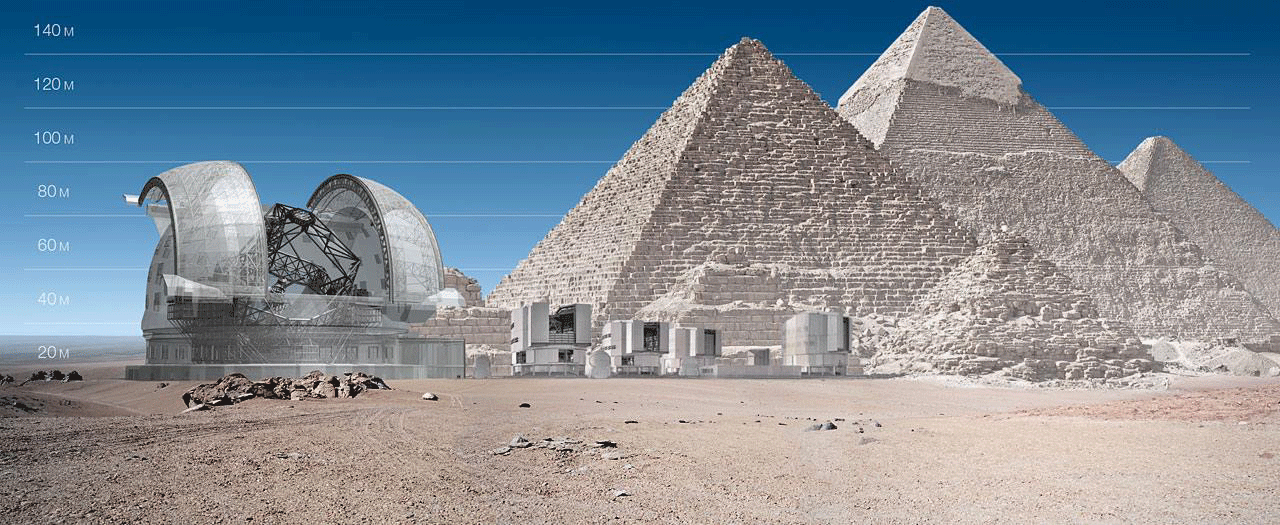
The largest of the planned construction telescopes to date. It will also be built in Chile, in the Atacama Desert. The colossal 39-meter multi-part mirror will make the telescope 15 times more light-sensitive than the Hubble. True, the construction will have to wait for another 10 years if there are no problems with the financing of the project. It is difficult to guess what discoveries can be made with such a giant telescope.
Where is everyone?
In recent years, with a new force, controversy has flared up about whether life is rare or frequent in the Universe.
According to the point of view about the uniqueness of the Earth, it is extremely difficult for science to explain the origin of life. Proponents of this theory believe that in ancient times a unique combination of factors formed on our planet that gave rise to life, and this is unlikely to have happened anywhere else.
The idea is sad, and therefore many hold the opinion that life is still very common in the Universe. According to the experiments, some bacteria are able to preserve viability in outer space, which means there is a possibility that life on Earth appeared from the outside, brought in by a meteorite. Who knows, suddenly, as a result of one of the most powerful collisions, of which there were many in the history of our planet, terrestrial microorganisms were transferred to other planets of the solar system? Suddenly, we find their traces in the sedimentary rocks of Mars?
But even if the theory of panspermiauntenable, it still does not prove the correctness of supporters of the version of the uniqueness of the Earth. In any case, all our efforts to search and analyze exoplanets are dictated, first of all, by the belief in the existence of life on other planets. And the improvement of observation tools — the introduction of new ground-based and orbital telescopes — will give us the opportunity to confirm or deny both theories about the prevalence of life. But even if we do not find anyone, we will better understand the mechanisms of the emergence and evolution of the planets. And this is just a reminder of how lucky we are to live on the “little blue dot”.
